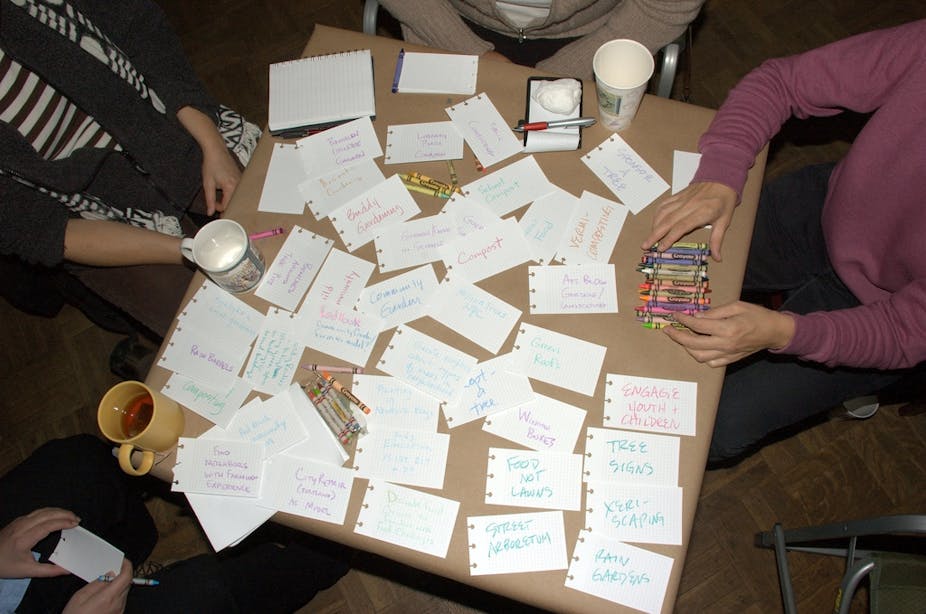Apartment owners beware – your asset could be under threat! If we don’t improve the sustainability of our city apartment blocks their value will fall.
Australian cities are increasingly embracing apartment living. Climate change and the impending carbon tax are providing a perfect opportunity for governments and local councils to work with owners corporations and apartment owners. It’s a great time to embrace sustainable development and retrofits (renovations) of apartment blocks, particularly for common areas. For instance common area lighting and shared services such as swimming pools, could be retrofitted to be more energy efficient.
This is especially relevant to the current stock of ageing apartment blocks in Australian cities. If these apartment blocks are allowed to fall into disrepair, it will adversely affect land values and opportunities to insure buildings. This will place the owners corporation, as well as individual apartment owners, at risk of long term financial and physical damage to their asset. Local and state governments will also suffer, if precincts become populated by poorly maintained and run-down buildings. While these buildings are being repaired to avoid blight, doesn’t it also make sense to make them more sustainable?
Recently we have been studying the attitudes and behaviours of apartment owners and owners corporation committee members. What do they think about sustainable retrofits for shared services and common areas in apartment blocks? We wanted to know whether there is any potential to develop an online information tool to address these issues. A tool like this could inform owners about their legal rights and responsibilities when making sustainable changes to common areas and services.
The City of Sydney and the City of Melbourne, as well as Strata Communities Australia, Owners Corporation Network and Green Strata, have shown interest in developing such an online tool. They all have an interest in maintaining property values, and using sustainable retrofits to encourage lower carbon emissions is a positive contribution for the local and more global environments.
We found that people enjoyed living in their apartment block. They had a positive feeling about maintaining these apartment developments. Around half of the sample knew about a maintenance plan for their complex. If they owned and lived in their own apartment (as opposed to owning an investment property) and if they were on the owners’ corporation committee, they tended to be more aware and more positive about maintenance plans, sustainability assessments and the need to implement sustainable changes to shared services and areas within their apartment block.
There has been some progress towards implementing sustainable retrofits in some city apartment blocks. Some residents are installing solar panels, using more energy-efficient light globes, and recycling their water.
While the sample of respondents believed that sustainable retrofits were important, they were divided about the likelihood of this happening. It seems that achieving support for sustainable retrofits is a balancing act between the need to adopt sustainable retrofits, and the need to address the marketing, legal and governance issues and other barriers. Retrofitting apartment blocks, both large and small, is hindered by owner voting quorums. This can be especially challenging when apartments are owned by interstate or international investors
An online information tool could help apartment owners and owners corporations get information about implementing sustainable retrofits. It would encourage stakeholders to do their “bit” for sustainability and for the reduction of greenhouse gas emissions. Both these things could save them money on their power and water bills as well as help retain the value of their apartment building as an energy-efficient and lower-cost facility.
This online tool should include factual information as well as case studies and a Q&A section. Residents are often worried about the cost of retrofits, so the site should provide information on cost comparisons and tools for completing a cost-benefit analysis. Information on subsidies, funding, rebates, grants and how to obtain them could help reluctant retrofitters. And as any retrofit is subject to numerous laws and regulations, legal guidance on council approvals and building regulations would be vital.
The tool should also have a practical aspect, allowing for sharing information about double glazed windows, grey water systems, green gardening and solar panels.
For many apartment owners, the inclination to be more sustainable is there. With information, that inclination could shift to a real-life retrofit.

